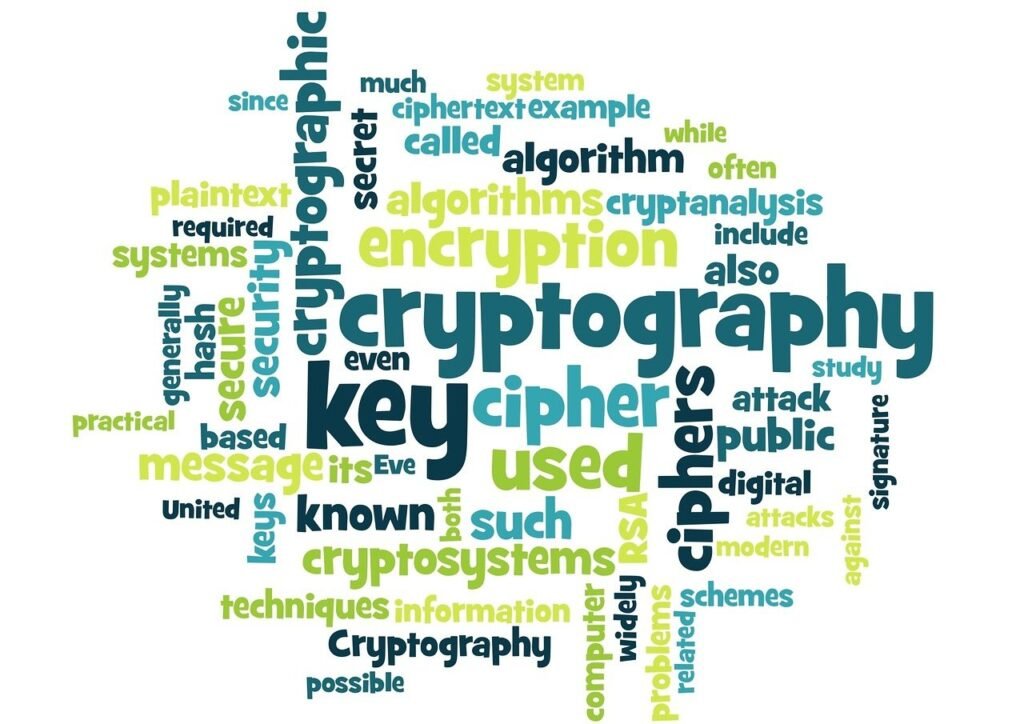Introduction
In the advanced computerized age, where information rules, cryptography has turned into the foundation of secure correspondence. It safeguards delicate data, safeguards online exchanges, and guarantees protection in an undeniably interconnected world. In any case, what precisely is cryptography, and for what reason is it so urgent for our computerized lives? This article unwinds the secrets of cryptography, jumping into its importance, types, applications, and future possibilities.
What Is Cryptography?

Cryptography is the study of getting data by changing it into an incomprehensible organization over completely to forestall unapproved access.
Core Concepts of Cryptography
- Encryption: The most common way of changing over plain text into ciphertext.
- Decoding: Turning around the encryption interaction to uncover the first message.
- Keys: Novel strings utilized for scrambling and decoding information.
- Calculations: Numerical equations that structure the premise of encryption and unscrambling.
| Term | Definition |
|---|---|
| Encryption | Converts readable data into scrambled, unreadable text. |
| Decryption | Reverts scrambled text to its original form. |
| Keys | Tools used to encrypt and decrypt data securely. |
| Algorithms | Step-by-step procedures for encrypting and decrypting information. |
Cryptography traces all the way back to antiquated human advancements, yet its cutting edge execution abilities innovations like secure sites, computerized marks, and blockchain.
The Importance of Cryptography in Digital Security

Cryptography guarantees the secrecy, uprightness, and legitimacy of data.
Why Cryptography Matters
- Privacy: Guarantees information is simply open to approved parties.
- Respectability: Confirms that data hasn’t been adjusted during transmission.
- Validation: Affirms the personality of gatherings associated with correspondence.
For example, without cryptography, internet banking exchanges, messages, and, surprisingly, confidential meet-ups would be defenseless against interference and abuse.
| Aspect | Impact of Cryptography |
|---|---|
| Confidentiality | Protects sensitive information from unauthorized access. |
| Integrity | Ensures data remains unaltered during storage or transmission. |
| Authentication | Confirms the legitimacy of users and systems. |
Types of Cryptography
Cryptography comes in various structures, each with special applications and advantages.
1. Symmetric Key Cryptography

Involves a solitary key for both encryption and decoding.
- Benefits: Quicker and less difficult to execute.
- Drawbacks: Key sharing builds the gamble of openness.
2. Asymmetric Key Cryptography
Utilizes two keys — a public key for encryption and a confidential key for unscrambling.
- Benefits: Secure key sharing.
- Burdens: More slow than symmetric cryptography.
3. Hash Functions
One-way encryption with no decoding.
- Benefits: Ideal for checking information trustworthiness.
- Impediments: Can’t be switched to acquire the first message.
| Type | Description | Example |
|---|---|---|
| Symmetric Key Cryptography | Single key for both encryption/decryption. | AES, DES |
| Asymmetric Key Cryptography | Uses a key pair (public/private). | RSA, ECC |
| Hash Functions | One-way encryption for data verification. | SHA-256, MD5 |
Applications of Cryptography
Cryptography powers a vast range of technologies and everyday applications.
1. Securing Online Transactions

Whether you are shopping online or using a banking app, cryptography ensures the secure transaction process.
2. Protecting Communication
Informing applications like WhatsApp utilize start to finish encryption to defend discussions.
3. Enabling Blockchain Technology
Blockchain depends on cryptographic hashing and computerized marks to keep up with straightforwardness and security.
4. Digital Signatures
Cryptography guarantees the realness and trustworthiness of computerized records.
| Application | Cryptographic Use |
|---|---|
| Online Transactions | Encrypts payment details for secure processing. |
| Communication | Protects private messages from interception. |
| Blockchain | Validates transactions and ensures tamper resistance. |
| Digital Signatures | Verifies sender authenticity and document integrity. |
Challenges in Cryptography
Regardless of its significance, cryptography faces difficulties in execution and development.
1. Computational Complexity
Solid encryption strategies frequently require huge handling power.
2. Quantum Computing Threat
Future quantum PCs might actually break current encryption techniques.
3. Key Management
The safe age, stockpiling, and sharing of keys stay complicated and weak regions.
| Challenge | Impact |
|---|---|
| Computational Complexity | Slows down systems, particularly on low-power devices. |
| Quantum Computing | Could render current encryption algorithms obsolete. |
| Key Management | Increases risk of unauthorized access or loss. |
Comparison Table: Traditional vs. Modern Cryptography
| Aspect | Traditional Cryptography | Modern Cryptography |
|---|---|---|
| Key Management | Relied on manual methods. | Automated and complex mechanisms. |
| Algorithms | Simpler and easier to break. | Robust and resistant to attacks. |
| Applications | Limited to military and government. | Widespread across industries. |
The Future of Cryptography
Arising advancements and dangers are molding the fate of cryptography.
1. Post-Quantum Cryptography
Creating encryption calculations impervious to quantum processing assaults.
2. Homomorphic Encryption
Permits information to be encoded and handled without decoding, guaranteeing security in distributed computing.
3. Zero-Knowledge Proofs
Empowers check of information without uncovering the actual information, ideal for security centered applications.

| Trend | Description |
|---|---|
| Post-Quantum Cryptography | Protects against quantum computer attacks. |
| Homomorphic Encryption | Enables secure computation on encrypted data. |
| Zero-Knowledge Proofs | Ensures privacy while validating information. |
Notes on Cryptography’s Role
- Information Security: Cryptography stays basic for shielding touchy data.
- Security Safeguarding: Guarantees that people’s computerized impressions are safeguarded.
- Mechanical Headway: Cryptography advances close by dangers, keeping frameworks secure.
Conclusion
Cryptography is the foundation of advanced security, empowering safe correspondence, monetary exchanges, and information trustworthiness. As digital dangers become more modern, the job of cryptography keeps on growing, tending to difficulties and integrating inventive advances like quantum-safe calculations and zero-information confirmations.
In a world driven by information, understanding and utilizing cryptography is fundamental for people, organizations, and legislatures the same. By opening the insider facts of cryptography, we can shield our computerized future and explore the intricacies of the cutting edge mechanical scene.

